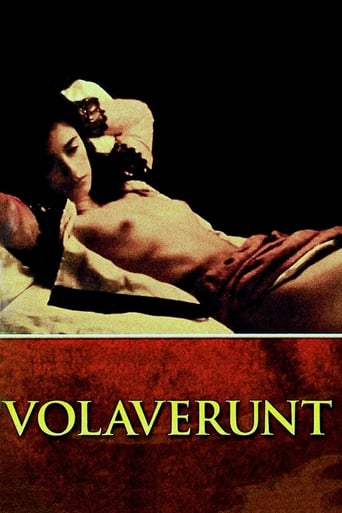CommentsXp
Best movie ever!
Huievest
Instead, you get a movie that's enjoyable enough, but leaves you feeling like it could have been much, much more.
Taraparain
Tells a fascinating and unsettling true story, and does so well, without pretending to have all the answers.
Hadrina
The movie's neither hopeful in contrived ways, nor hopeless in different contrived ways. Somehow it manages to be wonderful
esteban1747
Intrigues, love and sex with the Duchess, jealousy from the queen, and finally the Duchess killed, but who killed her? Bigas Luna was able to ensemble a plot, which starts with few dialogs, good photographs, Aitana Sánchez-Gijón (The Duchess) and Penélope Cruz showing something of their charms, one Jorge Perugorría (Goya painter) talking or whispering, probably making an effort to avoid his Cuban accent, Jordi Mollà as a lover and powerful minister, and Stefania Sandrelli, no matter how old she is, as a queen, and also a lover. The excitement really starts after mid film, and more than a drama it becomes a good thriller. Therefore do not miss anything from the first part of the film if you want to understand what really is going on. Moreover the film indicates how the famous paint of Goya "La Maja Desnuda" was done and what source the painter used. Certainly it was not the Duchess' body but the one of a nice gypsy lady, Pepita Tudó (Penélope Cruz), very "maja" by the way, we would say in Spanish.
Keith F. Hatcher
Bigas Luna is not exactly the easiest of Spanish directors with whom to come to terms. His stories tend to wade neck-deep in sophismic quagmires, aided and abetted by insolently visual splendours, which, however, for the intelligent viewer will not succeed in covering up certain lackings which place this director a long way away from Buñuel, or even Saura if you push me. After having been besieged throughout his `La Camarera del Titanic' which left me neither hot nor cold and wondering where the supposed story went under the overlay of irritating sumptuousness, I ventured into watching `Volavérunt' more from my personal interest in the famed Spanish artist Francisco Goya, and to see how Aitana Sánchez-Gijón and Penélope Cruz - who are intimate friends - would bear up, rather than any attraction Bigas Luna might have.The story revolves around Goya's womanising and the mysterious death of the Duchess of Alba at the end of the 18th and beginning of the 19th Centuries, at a time when Madrid was wobbling through a difficult time and setting the scene for the following Prim vs Crown uprising. The title of the film comes from the Duchess of Alba's euphemism for her most private parts, supposedly revealed in the famous painting `La Maja Desnuda' but which in fact is another woman's body - possibly Pepita Tudó (Penélope Cruz). `Las Majas' were originally called `las gitanas' (gypsy women), but in those days `maja' meant a liberal woman who enjoyed her sexuality and sensuality.The sets are superb, at least as good as any other period piece films I have ever seen; Franca Squarciapino's costumes are extravagantly magnificent; Asturian courtyards, heraldic-emblazoned palaces and luxury carriages pass by in front of your eyes. But the story is stulted, overwhelmed perhaps by such an immense visual banquet.Jordi Mollà played an unconvincing Godoy; you should see him in `La Buena Estrella' (qv). And as for our two lovely actresses, I can only opine that Carlos Boyero in his insolent and infinitely unrefined article in `El Mundo' when this film was shown at the San Sebastián film festival, was right at least in saying that they are superbly beautiful, but they too need rôles which can show they are good actresses. Amen: in `Volavérunt' they were not able to show anything - apart from a fair amount of sexuality.At a grand gala dinner held in the midst of so many conspirations in and out of the royal palace, a fascinating piece of music can be heard: it is the last movement of `El Retrato de Madrid' (Portrait of Madrid) by the Italian composer Luigi Boccherini who for many years was the Spanish Court's official maestro da capela; this piece was composed some years later than the film's story.
videolionvideo
Juan Jose Bigas Luna is best known in the U.S. for Jamon,Jamon.....a sexy film which gave Penelope Cruz and Javier Bardem international acclaim.Now we have this uniquely restrained film for the director,a lavish costume drama full of passion and intrigue.Featuring many actors from his previous films it centers around the mystery of the real model for Goya's The Naked Maya and the death of the Duchess of Alba.This is more a woman's film as they are the stronger more defined characters... Penelope Cruz is electric and Aitana Sanchez Gijon (Former president of the actors guild)has never been sharper or more powerful.The sparks between the two actresses especially during a Paso Doble,duel of wills jumps off the screen.This film has yet to find American distribution but has played the festival circuit.
ElianaM
This historical epic, a rarity for quirky Catalonian director Bigas Luna (JAMON, JAMON, GOLDEN BALLS), is quite an achievement. One which has been undeservedly maligned by many. Aitana Sanchez Gijon has been praised for her performance as the Duchess of Alba, having won the Best Actress award at the 1999 San Sebastian Film Festival. The rest of the stellar cast: Penelope Cruz, Jordi Moya', and Jorge Perugorria (as Goya) are at least adequate, and the art direction, and look of the movie are both breathtaking.

